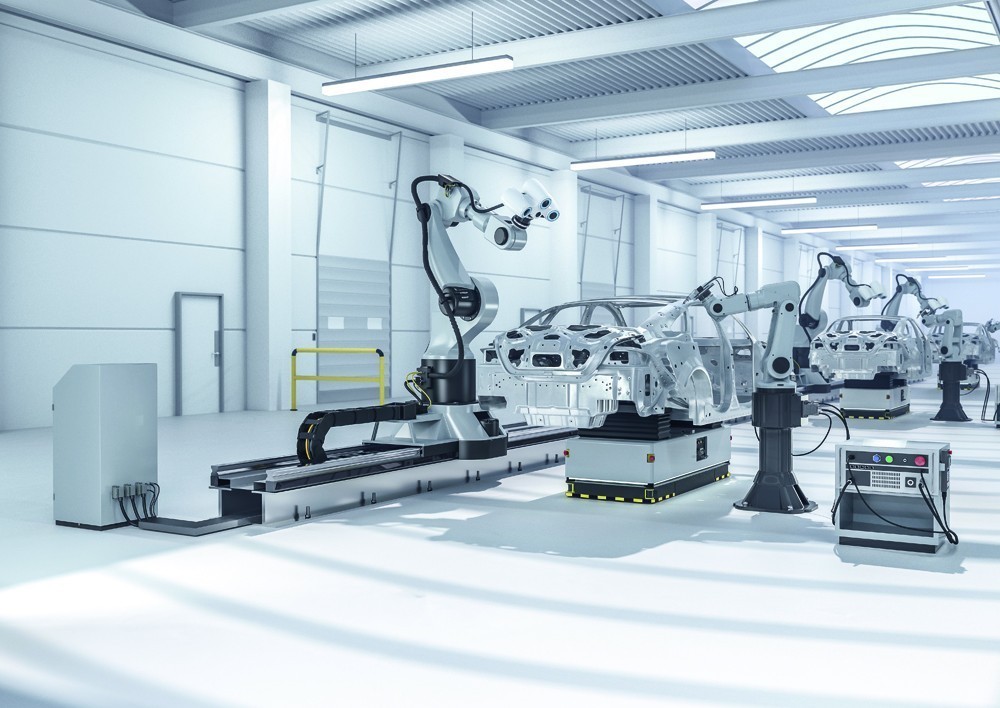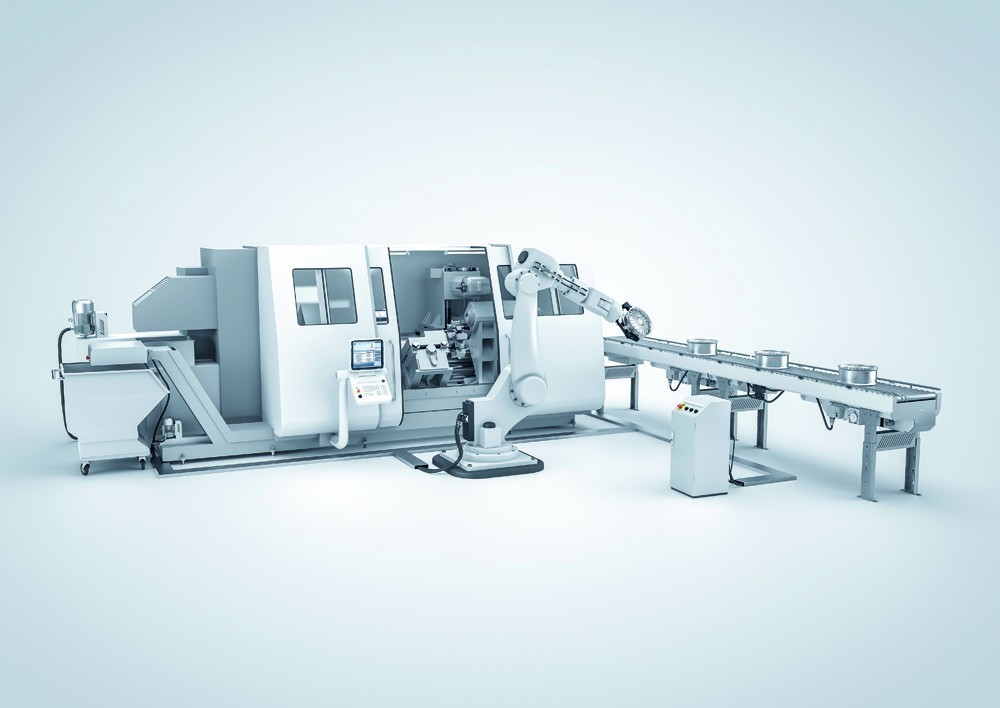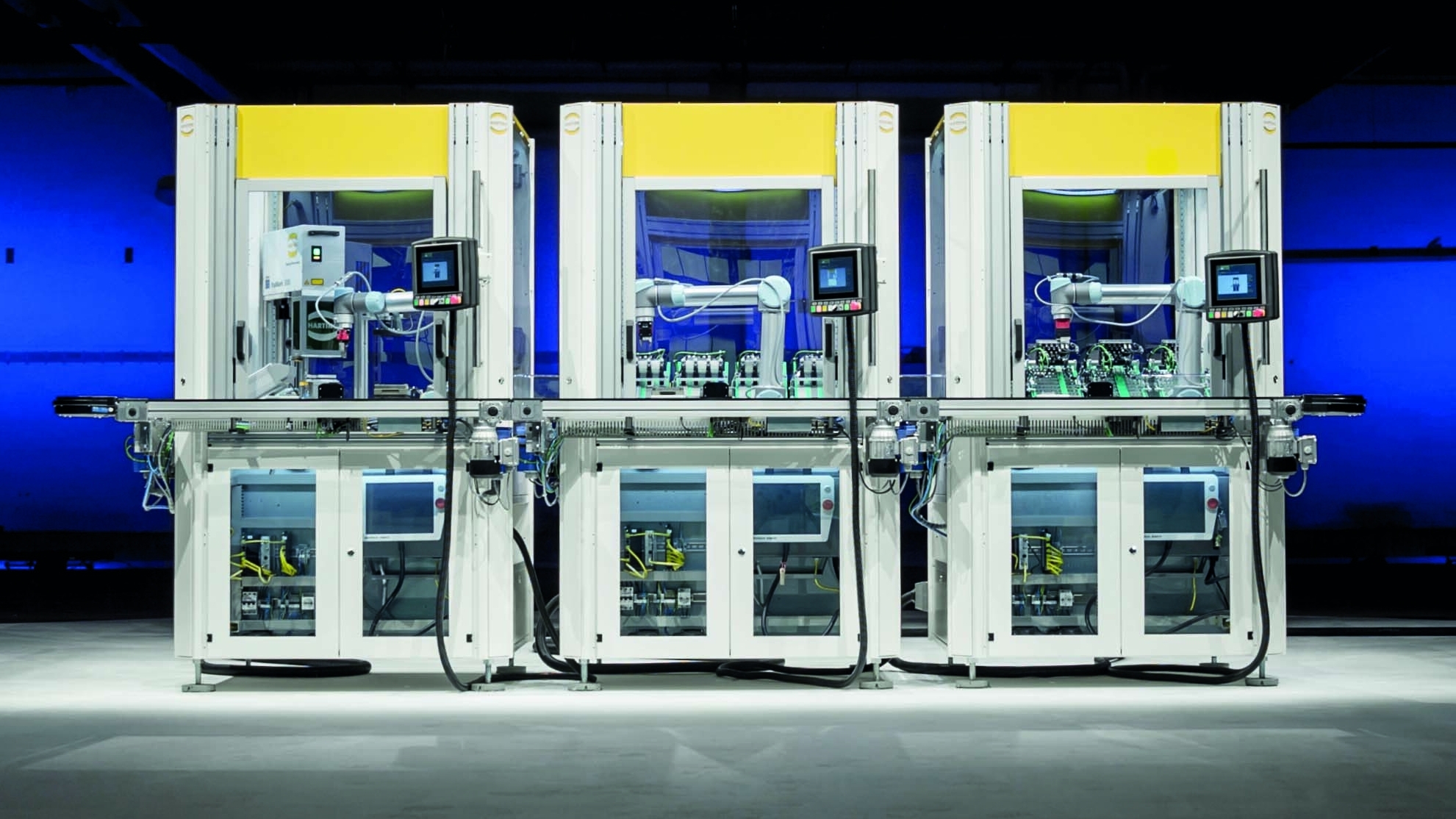Machine and plant manufacturers who pursue a consistently modular approach are often particularly successful. The article draws conclusions from the experiences of Harting customers from the mechanical engineering sector and shows how they design the modularization of their products as efficiently as possible. Interfaces play a central role in these concepts.
The principle of modularity can be illustrated well with Lego building blocks: Countless objects can be created from a few basic building blocks and defined connecting elements. This has also become established in industry for products with a much higher degree of complexity and variability. Typical is the platform strategy of the automotive industry, according to which not only engines, gearboxes and axles, but also entire chassis are used as scalable modules for cars of different models, types and even brands. In industrial control and drive technology, too, systems such as PLCs, IPCs, HMIs and drive components can be customized from individual 'slices' or several remote I/O blocks for the respective machine or system to be automated. They can be expanded or modified in further use without great effort.
It is often said that modularization of complex, industrially manufactured products is only successful, both technically and economically, because they are built in their thousands (industrial control systems) or even millions (automobiles). However, the modularization approach can also be successful if, at best, only a few hundred machines of one type are built per year.
There is currently no alternative to modularization in mechanical engineering: "Standardization and modularization are aimed at a portfolio with less variance and complexity as well as an overall lower cost level, without reducing the breadth and individuality of the range," according to the VDMA ([1] p. 59).
 Production line in the automotive industry
Production line in the automotive industry
Flexibility requirement
To better understand this statement, here are a number of typical requirements in the manufacturing systems market: A high degree of variability in production systems is required, which makes it possible to manufacture a wider range of products, even in small to medium quantities ('industrial manufacturing of individual products', 'Industry 4.0').
To achieve this, the systems must be scalable and offer options for subsequent expansion in terms of capacity and output. Whereas net productivity used to be the main focus, mechanical engineering customers are now paying more attention to variability and expandability. In other words, it is not 'high-bred' systems for the production of components in large quantities that are in demand, but systems that can be used to flexibly manufacture different products in small to medium quantities [2].
Competition in the mechanical engineering sector is forcing OEMs of production systems to expand their business models. In the B2B market, it is no longer enough to develop good products, sell them to operators and then wait for service and maintenance orders! TCO models, which were often used in the past to determine the profitability of investments, are increasingly being supplemented by LCC models (LCC = Life Cycle Costs). This allows new business concepts including maintenance, service and retrofit services (e.g. predictive maintenance) to be offered very transparently. It is easier for the machine manufacturer to convince the user that the extended offers covering the entire life cycle of a system are of benefit to him [3]. The growing demand for subscription models on the customer side ('pay per use', 'pay per month', 'pay per unit', etc.) confirms the overarching trend. It also makes economic sense for OEMs to turn to benefit and service-oriented models.
 Machine tool with key and add-on modules as part of a production line
Machine tool with key and add-on modules as part of a production line
In 2018, the average margin in the new machine business was 5.4%. At over 40%, it was many times higher in the service business [4]. What's more, demand for service is nowhere near as cycle-dependent as demand for machines! Particularly in the case of high-priced capital goods, it is often more economical for users to expand existing machines or replace units/subsystems than to invest in a completely new acquisition.
In some customer sectors of mechanical engineering, the expectation has become widespread that machine modules and sub-systems from different suppliers can be combined into a coherent production line without additional effort - and without any technical or economic disadvantages.
All these requirements can only be met very efficiently, both technically and economically, if the production systems are consistently modularized and networked as 'smart' systems in different expansion stages. ID-Consulting, Munich, recently published figures in its 2018/2019 modularization study showing that modularization is an above-average successful strategy in mechanical engineering: modularization of products drives corporate success [5].
Based on experience with Harting customers, OEMs should first answer the following general questions positively when deciding on the pros and cons of the modular approach:
- The total estimated expenditure for a new end-to-end modular product group or family will be at most so high that it can plausibly be recouped within the usual industry timeframe and assuming worst-case market development
- The technical challenges of the planned division of the machine or system into individual modules with transitions and interfaces should be assessed as generally feasible by all parties involved (mechanics, electrics, safety technology)
- All operational functions involved in the future service provision process - development & design, project planning & sales, production & assembly, documentation, service & after-sales services, supply chain & marketing communication - should be prepared to align their working methods with the modular concept of the machines and to 'live' this both internally and at the customer's premises.
Key question of modularization: Differentiation
To what extent should a machine or system be divided into modules and what general approach is recommended? The real genius of Lego building blocks lies not in the building blocks themselves, but in the connections between them. These determine the possible granularity of the division, but are also the limiting factor for the connection of components. It is comparable with the interfaces of individual modules of a machine or system: the interfaces ensure that they 'fit together' harmoniously. At the same time, they ensure the proper functioning of a production system, a single compact machine as well as an entire production line. The core question of modularization is therefore: How do you separate the components of an 'overall system' from one another?
Harting recommends the following procedure for defining the boundaries between the electrical and electromechanical power, signal, data and communication interfaces:
- First, the output system should be considered according to function: Key functions with OEM core competence; basic functions (e.g. carrier or transportation systems) that span the entire system; and state-of-the-art add-on or auxiliary functions that are secondary to the OEM. A little over-engineering in the machine modules, in which the core competencies are bundled, is an advantage
- The functions should then be combined into modules - only as granularly as necessary; the possible optimization effects and the necessary equipment variance - both on the manufacturer and user side - should be taken into account. Include as many stages of service provision as possible along the machine life cycle and/or country-specific features of customer requirements
For all elements of the machine that cannot be further 'divided' - sensors, actuators, HMI, drives, etc. - that require a power, signal or data connection, the following should be considered
- the functional relevance for the respective newly defined machine module should be assessed and preferably represented graphically
- be assigned to a corresponding layer in the automation pyramid
- all interfaces required for the connection of individual elements are listed and assigned to the respective machine modules
The result is a matrix view with all the planned modules of the future system. The hierarchical arrangement of the elements with associated interfaces, including their relevance for one or more machine modules, is also visible.
The advantage of this approach is a basis for assessing feasibility, technical risks and the necessary design of interfaces. In addition, you create transparency for yourself by weighting the importance of the modules for the future system. The matrix view also helps in deciding to what extent the control of a modular machine or system should be designed centrally or decentrally. Observations show that:
- Systems with high variability of equipment in the key functions are more likely to be equipped with decentralized I/O systems if they have a large spatial footprint
- Combined structures are chosen for smaller, highly variable systems: in these systems, control of the key and basic functions is centralized; additional functions are controlled either centrally (simple functions) or decentrally (with complex interfaces), depending on their complexity
- For smaller systems and/or simple systems with low variability, purely centralized control is technically simpler and makes more economic sense
When deciding on a structure, it should be noted that centralized systems generally incur lower costs for components and materials. However, this increases the costs and resources required for both production and installation at the end customer. A positive aspect from an OEM and end user perspective is that all modern control, drive and HMI systems make it possible to completely separate the physical level from the logical levels. This applies to particularly fast and precise processes as well as to highly sensitive safety-relevant or interlinked systems. The (almost) absolute freedom provided by the modularization of production systems is decisively influenced by the interfaces. Solutions and products for interfaces
- can always be designed to meet the necessary requirements (electrical, EMC properties) of the transmission path in a cost-optimized manner
- are scalable in terms of technical parameters as well as size and number on each machine module
- fulfill different requirements for contacting, mounting, protection class and material and can integrate alternative transmission media.
Conclusion
Consistent modularization based on the targeted optimization of all costs and service provision processes throughout the entire life cycle (LCC model) enables OEMs to manufacture machines according to the modular principle - with significantly lower costs and time expenditure. This also increases the scope for customer-specific configurations. Users also benefit, as they receive a cost- and requirement-optimized machine that is also transparently designed. Harting provides solutions for all interfaces that are necessary in modern control, drive, HMI and communication technology for production systems in order to implement modularization without functional restrictions. This is demonstrated by the systems of its own mechanical engineering subsidiary Harting Applied Technologies and its own smart factory pilot and demonstration system HAII4YOU, which covers the application fields of digital twin and AI intelligence with, for example, basic parameterizable analysis functions, visualization of selected machine parameters and secure external access to the machine.(www.harting.com)
Sources and references:
- McKinsey: Future prospects for German mechanical engineering, 2014, VDMA, https://www.vdma.org/zukunftsperspektive
- Roland Berger: Production Systems 2020, 2011, https://files.vogel.de/vogelonline/vogelonline/files/3614.pdf
- M. Bode; F. Bünting; K. Geißdörfer: Calculation book of life cycle costs, VDMA Verlag
- Commerzbank sector report: Mechanical engineering in Germany, 2019, https://www.firmenkunden.commerzbank.de/portal/media/corporatebanking/neu-hauptportal-rebrush/aktuelles/branchen-und-maerkte/branchenberichte-1/Maschinenbau_Kurzversion.pdf
- ID-Consult: Modularization strategy 2018 / 2019: The influence of modular product architectures on corporate success, https://www.id-consult.com/fileadmin/Inhalt/02_Themen/024_Whitepaper/024_Fachartikel/Modularisierungsstudie_2018-2019.pdf


